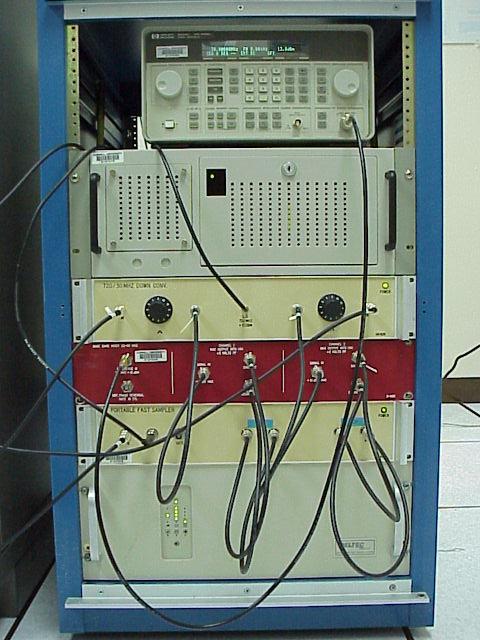
The first figure shows the main components of the sampling system. From top to bottom, a synthesizer providing a 30 MHz LO (now replaced by a nice LO/clock distribution box), a rack-mount PC (now replaced by an Aberdeen Stirling X31 server with 8 TB storage), a dual-channel 720/30 MHz downconverter, dual-channel baseband mixer, portable fast sampler, and power supply. The 19 inch rack, power supply, and SVGA monitor (not shown) belong to the NRAO VLBA station in St-Croix.
Figure 2 shows how the system was setup at the St-Croix VLBA station, including the four cables interfacing with the VLBA rack. The 1 PPS signal (bottom) connects directly to the portable fast sampler. The LCP and RCP 720 MHz IF monitor outputs (middle) connect to the LCP and RCP inputs of the downconverter. The 750 MHz LO monitor output (top) connects to the downconverter LO input, after an optional 30 dB amplifier stage located at the back of the downconverter. An additional cable connected to the maser provided the synthesizer reference and the sampling clock.
The last figure shows a closeup view of the PC, with floppy drive, CD-ROM drive, removable hard drive, and Mammoth II tape drive. The PC is connected to the ethernet in order to run the network time protocol and to allow remote operation.
The 30 MHz IF signals are converted to baseband in the red complex mixer. The I-Q outputs of the mixer are connected to the portable fast sampler with optional baseband filters.
The 720/30 MHz downconverter has adjustable attenuators in the range 0-10 dB. The portable fast sampler has computer-controlled attenuators in the range 0-15 dB.